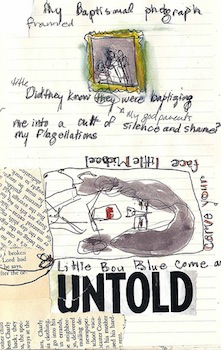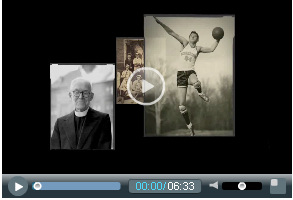
I learned of Caryn Mirriam-Goldberg indirectly through Yvette Hyater-Adams, who completed the Transformative Language Arts that Caryn co-founded at Goddard College. I find the TLA program fascinating, and I’m delighted to present this Q&A with Caryn over the next five days.

Bio: Caryn Mirriam-Goldberg is the poet laureate of Kansas and the
founder of Transformative Language Arts at Goddard College, where she teaches. She’s the author of 10 books, including four collections of poetry, a memoir on cancer and community, and a beloved writing guide, and for almost two decade, she’s been leading community writing and storytelling workshops widely with many different communities. With singer Kelley Hunt, she co-writes songs (and is a songwriter listed with BMI), collaboratively performs and offers Brave Voice: Writing and Singing for Your Life workshops and retreats. She also co-edited the Power of Words: A Transformative Language Arts Reader and co-founded the Transformative Language Arts Network (Power of Words book available through this site.) For people interested in learning more about TLA, Caryn recommends Goddard’s TLA Program, the Transformative Language Arts Network, and the Power of Words conference, an annual conference held at Goddard College and organized by the TLA Network, which will next be held Sept. 22-26 and feature keynoters Nancy Mellon, Gregory Orr, Greg Greenway, Kim Rosen, S. Pearl Sharp, and many others.
Q&A with Caryn Mirriam-Goldberg, Question 1:
Q: The Web site for the TLA program notes: “Transformative language arts is a new and emerging academic field focused on social and personal
transformation through the power of the written, spoken, or sung word.” Can
you talk about the roots of this field? It appears that you founded it. What
kinds of societal needs were you responding to in establishing this field?
A: TLA is both a new, emerging field and an exploration of a very old human impulse: to make sense of the world through words and arts. I was drawn to found TLA for several reasons: one is that I realized there were all kinds of programs in storytelling, drama therapy, literature and creative writing
and so many related fields, but many of these programs fragmented apart
writers, storytellers, spoken word performers, theater people, as well as how
the language arts can be used for healing and health and how they can be
used for community building and social change.

I wanted to develop a program of study where people could holistically study the language arts — written, sung or told — according to what gave them meaning, whether that’s through the lenses of spirituality, social change, health, education, mythology, or
other areas. I also was inspired by the realization that in Kansas, I could
make a living just by leading community writing workshops, and if this were
possible in the middle of the country, it must be even more possible in
areas where there’s greater support for the arts. I began to research, and I
found so many programs and projects around the world — theater for social
change, healing storytelling, poetry for political causes — as well as
organizations such as the National Storytelling Alliance, National
Association for Poetry Therapy, Theatre of the Oppressed, Bread and Puppet,
Healing Story Alliance. What everything had in common was the use of the
language arts to change the world, whether it was songwriting to bring
together teens, writing workshops in prisons, storytelling sessions in
hospitals. All of this inspired me to develop the TLA program at Goddard.
 say very much beyond this on the NPR site:
say very much beyond this on the NPR site:












